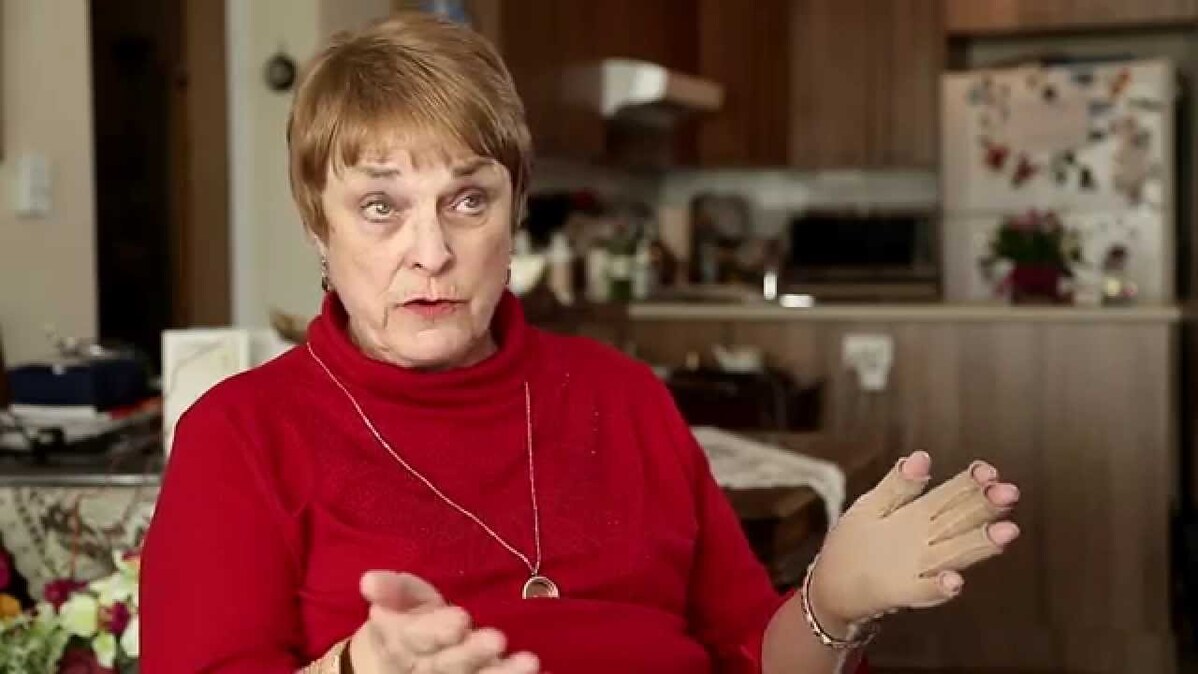Retired registered nurse Mary-Ann Browne knows she has to live extremely carefully. With just one third of her heart muscle functioning properly, the Canadian is one of the more than a million people diagnosed with heart failure around the world every year.
 VIDEO
VIDEO
The outlook for patients with heart failure has been dismal. About 25% of patients die within a year of diagnosis and 50% are dead within five years and it is the biggest cause of hospital admissions in adults aged over 65 in the Western world. While existing treatments address symptoms such as fluid retention and breathlessness, advances in the understanding of heart failure mean new options for patients and caregivers.
Heart failure is one of the most difficult of the chronic heart diseases to manage.
Michele Packard-Milam, Executive Director, Mended Hearts
Heart failure, a chronic condition in which the heart cannot pump enough blood around the body, has many causes but typically occurs because the heart muscle has weakened or been injured, such as following a heart attack, viral infection or other serious illness. Aging populations and changing lifestyles mean heart failure is now the most rapidly growing cardiovascular condition, affecting approximately 26 million people globally in both the developed and developing worlds. Treatment costs, including hospitalizations, are estimated at $108 billion a year worldwide.
A quick guide to living with heart failure (PDF 1.5 MB)
Before falling ill Mary-Ann had been looking forward to a long, busy retirement and the chance to pursue her favorite pastimes, including skiing, travel and outdoor activities. The diagnosis of heart failure changed all this.
“It was a total, complete, absolute and overwhelming shock,” said Mary-Ann. “I didn’t realize how sick I was until they used that word. You feel like your body’s failed you and you’ll never be the same again.”
The symptoms of heart failure can be debilitating and most patients find they have to drastically slow their pace of life. Even everyday activities like walking and climbing stairs become increasingly difficult.
“I just don’t have the oomph I had,” Mary-Ann said.
For Michele Packard-Milam, Executive Director of Mended Hearts, a US-based patient organization for people with heart failure, patients experience many fears. Set up in the US more than 60 years ago, Mended Hearts helps people come to terms with their illness and understand there can still be a rich, rewarding life after heart disease diagnosis.
“Heart failure is one of the most difficult of the chronic heart diseases to manage,” she said. “We visit more than 200,000 patients a year. Many of the patients we visit don’t know they have heart failure or are having difficulty managing heart failure.”
Caring for someone with heart failure (PDF 2 MB)
New approaches to tackling heart failure include efforts by healthcare companies and caregivers to personalize care planning and involve patients more in managing their conditions. New implantable devices can help regulate the heart rate or check patients’ blood pressure, giving physicians early warning of a worsening condition. Drug development efforts seek to find new, more effective ways of using the body’s own systems to control the chronic condition and ultimately better patient outcomes after an episode of acute heart failure.
Packard-Milam is enthusiastic about the potential impact of these new treatment options.
“We’re really hopeful that new medications, combined with hard work on the part of the healthcare providers, caregivers and the patients themselves, will yield better quality of life and better longevity for people struggling with heart failure.”



